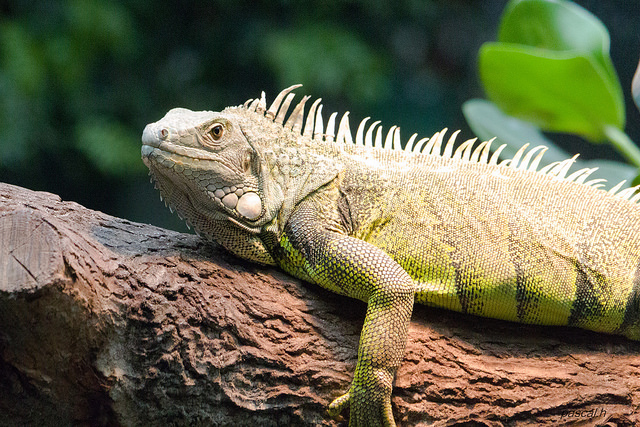October 19, 2017
Reptiles as Pets: Dispelling Common Myths and Misconceptions
 They’re scaly, slithery, tongue-flicking, slow-blinking, sometimes carnivorous, and most always mysterious — they are exotic reptiles that some people keep as pets. Reptilian pets are sometimes rumored to be low-maintenance and easy-going — but do they actually make good pets?
They’re scaly, slithery, tongue-flicking, slow-blinking, sometimes carnivorous, and most always mysterious — they are exotic reptiles that some people keep as pets. Reptilian pets are sometimes rumored to be low-maintenance and easy-going — but do they actually make good pets?
You may be surprised to learn that it’s only in the last hundred years that reptiles have been considered pets. Before the 1920s, houses weren’t centrally heated, and therefore were not conducive to keeping the cold-blooded animals warm enough so that they could thrive as a pet.
This is just one example of the complexities of keeping an exotic reptile as a pet. There are many more misconceptions that have lead people to see reptiles as viable pets when in reality, they’re delicate creatures who belong in their native habitats. Here are some more myths:
Myth 1: Reptiles can live happily in a terrarium
Terrariums are never able to provide the natural environment that exotic pets need. The many qualities of a natural habitat that these animals require is impossible to replicate in a home setting.
Reptilian friends of many different species need more space than can be afforded to them by a terrarium. Many smaller reptiles are touted to not require much space, but in reality, some species of snakes in the wild travel hundreds of square kilometers in their lifetimes. Snakes rarely have the ability to stretch out from end to end in a terrarium.
Myth 2: Reptile diets are simple
In the wild, reptiles have the challenge of forging and hunting for their food. Often, households that have a reptile as a pet will tell you that their snake or lizard enjoys a diet of ready-to-eat insects or frozen mice. In actuality, pet reptiles are missing out on the variety of nutrients, tastes, textures, and smells that would be available to them in the wild.
Myth 3: Reptiles are sedentary and don’t require mental stimulation
Reptiles are understood to be mostly sedentary animals, with minimal cognitive abilities. This is not true! Contrary to common belief, reptiles are smart and research has recently shown that not only do they have problem-solving abilities, they also have the ability to learn by imitation. Learning by imitation was previously thought to be unique to humans and some primates.
Many pet stores promote reptiles as pets because of their tranquil, low-maintenance demeanor. While reptiles don’t have a need for chew toys or to have play dates with other reptiles, they do have mental needs that are not met when they are kept as pets.
Myth 4: Reptiles make great pets — especially for busy families
Reptiles are fascinating to the curious minds of young children, and for this reason, as well as the many other misconceptions out there about reptiles, many reptilians find themselves in cramped terrariums with inadequate nutrition and not enough mental stimulation. It’s a sad life.
The accommodations that we might be able to provide in our homes is extremely limited, and does not provide for the basic needs of reptiles. And, “most species of reptiles’ lifespans are far longer than their human care-takers, and will undoubtedly stretch past the interest level of their owners,” says Dr. Shelley Hutchings, chief veterinarian at the Ottawa Humane Society.
To read more about the ownership of exotic pets, please visit our website:
https://ottawahumane.ca/about-us/media/position-statements/#answer9
Resources:
Daniels, M. (2014, September). First evidence that reptiles can learn through imitation. University of Lincoln. http://www.lincoln.ac.uk/news/2014/09/970.asp.
BCSPCA (2016, May). Reptiles as pets: five common myths debunked. Retrieved from http://spca.bc.ca/news/reptiles-pets-five-common-myths-debunked/
Stephanie Youngdale
Coordinator: Humane Education
